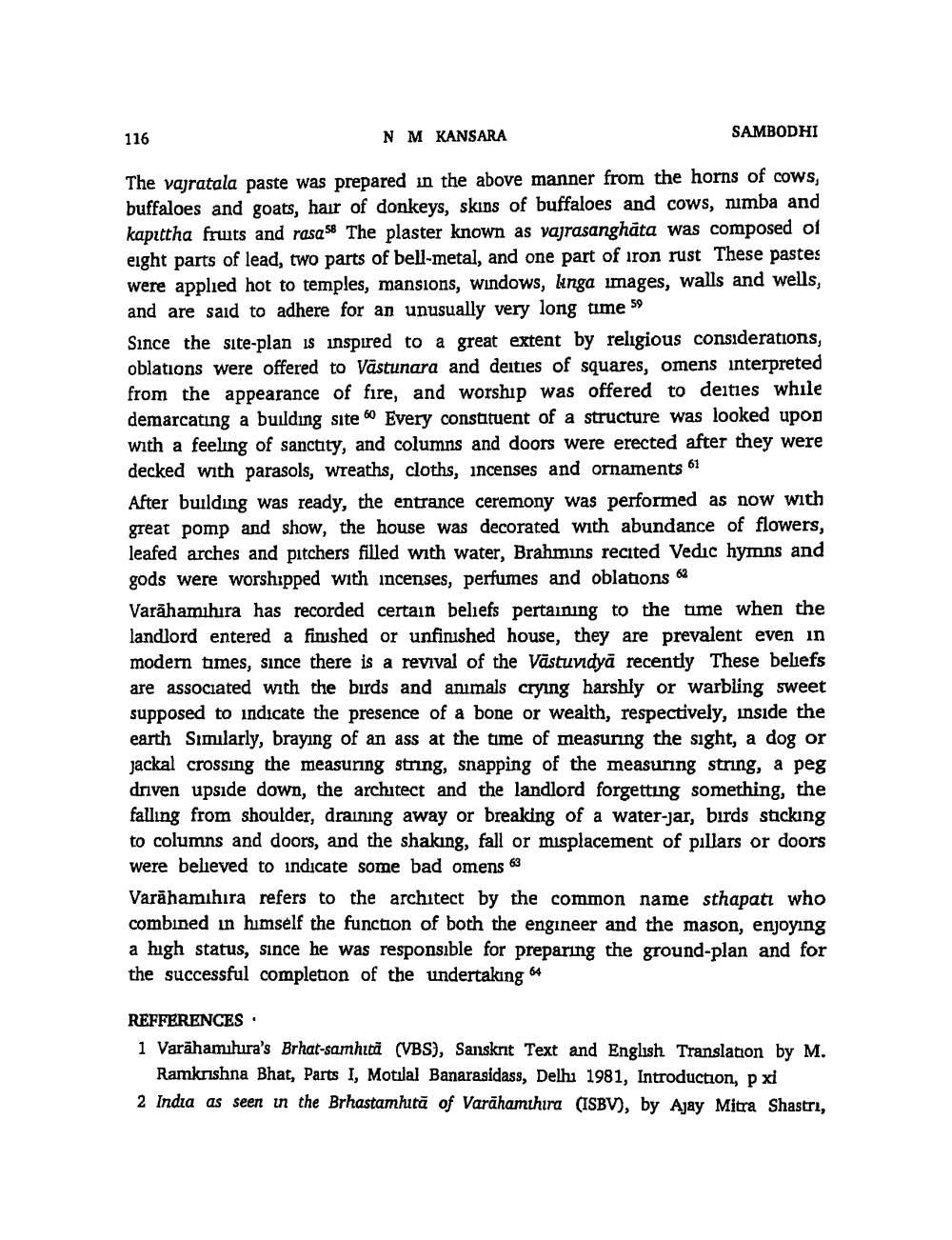________________
116
NM KANSARA
SAMBODHI
The vajratala paste was prepared in the above manner from the horns of cows, buffaloes and goats, hair of donkeys, skins of buffaloes and cows, nimba and kaputtha fruts and rasa 5 The plaster known as vajrasanghāta was composed of eight parts of lead, two parts of bell-metal, and one part of iron rust These pastes were applied hot to temples, mansions, windows, linga images, walls and wells, and are said to adhere for an unusually very long time 59 Since the site-plan is inspired to a great extent by religious considerations, oblations were offered to Vāstunara and deities of squares, omens interpreted from the appearance of fire, and worship was offered to deities while demarcating a building site 60 Every constituent of a structure was looked upon with a feeling of sanctity, and columns and doors were erected after they were decked with parasols, wreaths, cloths, incenses and ornaments 61 After building was ready, the entrance ceremony was performed as now with great pomp and show, the house was decorated with abundance of flowers, leafed arches and pitchers filled with water, Brahmins recited Vedic hymns and gods were worshipped with incenses, perfumes and oblations 62 Varāhamıhıra has recorded certain beliefs pertaining to the time when the landlord entered a finished or unfinished house, they are prevalent even in modern times, since there is a revival of the Vāstundyā recently These beliefs are associated with the birds and animals crying harshly or warbling sweet supposed to indicate the presence of a bone or wealth, respectively, inside the earth Similarly, braying of an ass at the time of measuring the sight, a dog or jackal crossing the measuring string, snapping of the measuring string, a peg driven upside down, the architect and the landlord forgetting something, the falling from shoulder, draining away or breaking of a water-jar, birds sticking to columns and doors, and the shaking, fall or misplacement of pillars or doors were believed to indicate some bad omens 63 Varāhamıhıra refers to the architect by the common name sthapati who combined in himself the function of both the engineer and the mason, enjoying a high status, since he was responsible for preparing the ground-plan and for the successful completion of the undertaking 4
REFFERENCES 1 Varāhamıhura's Brhat-samhita (VBS), Sanskrit Text and English Translation by M.
Ramkrishna Bhat, Parts I, Motilal Banarasidass, Delhi 1981, Introduction, p xi 2 India as seen in the Brhastamhitā of Varāhamthira (ISBV), by Ajay Mitra Shastri,




